The weeks are flying by… and with each one another Mystery Creature… this week’s is a bird… well camouflaged in the photo but do you know what it is?
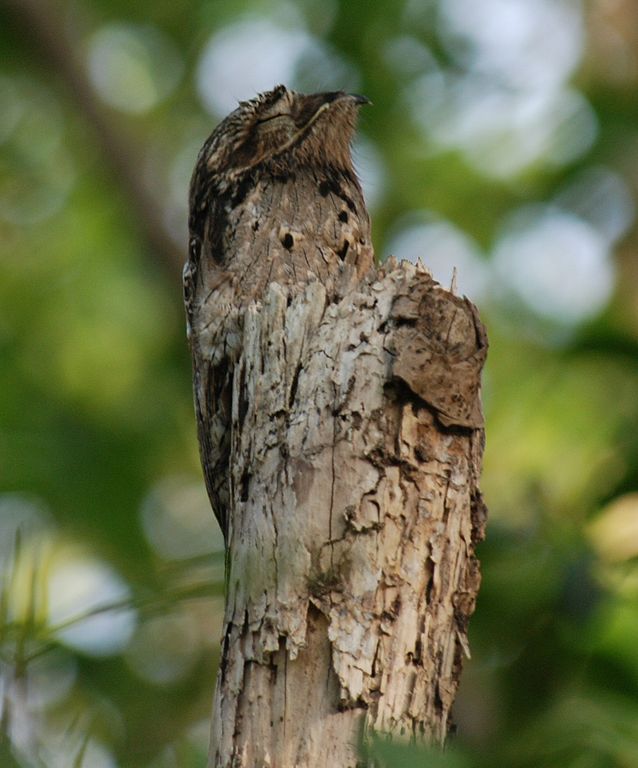
If you want to find out what this bird is… check out this post.
Science, Curiosity and Life

The weeks are flying by… and with each one another Mystery Creature… this week’s is a bird… well camouflaged in the photo but do you know what it is?

If you want to find out what this bird is… check out this post.
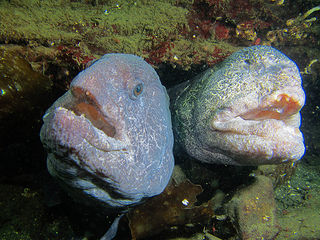
Did you guess this week’s Mystery Creature? It was the Wolf Eel (Anarrhichthys ocellatus) a bit of a misnomer really as it is not an eel at all, but a fish.
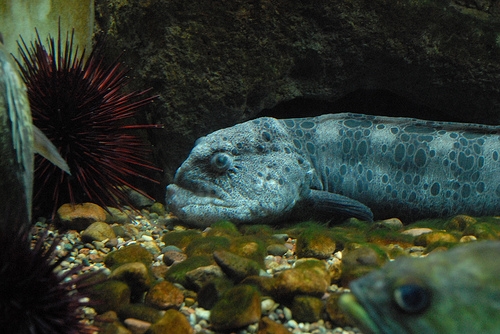
1. They belong to the wolffish family but are the only species within the family with these long eel like bodies; their appearance is quite like a normal fish at the head end but then their bodies can extend to eight feet (nearly two and a half metres) long;
2. Wolf eels are found in the North pacific ocean – covering a range from Japan to Southern California
3. They like to live in deep crevices or caves and often compete with octopus for such prized dwellings
4. They are quiet, solitary creatures, but can be quite aggressive when it comes to their territory; they will fight other wolf eels, octopus and, it has been suggested that they will even ward off sharks
5. They have a mouth full of powerful teeth… three rows on the top and two on the bottom; these teeth are helpful for cracking open the shells of the crabs, sea urchins and other shellfish on which they like to dine.
6. These animals do not pose much of a threat to humans in the water, divers usually report them as gentle and curious

7. Wolf eels usually mate for life; A female can lay up to 10,000 eggs at a time, coiling her body around the eggs protectively
8. Both parents guard the eggs, the male will often take his turn coiled around the eggs or even coiled around the female as she guards the egg, for added protection
9. They lack a swim bladder and much therefore stay in constant swimming motion to stay afloat. They swim by moving their bodies in an S shape, much like a snake moves across the ground; they are slow moving creatures
10. Wolf eels can live for more than 20 years. They usually do not start to reproduce until about seven years old.
Suggested further reading:
The Marine Detective – No ugly fish
Monterey Bay Aquarium on the Wolf Eel
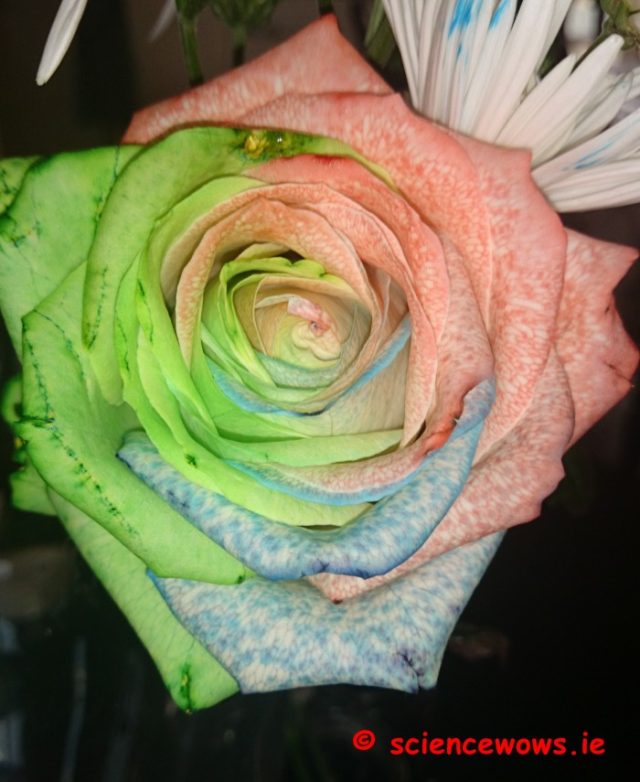
This week’s Fun Friday post is a variation on a previous blog…. but after Greenside Up shared a photo with me of a multi-coloured rose, I just had to try to recreate it.
This experiment is a great way of explaining transpiration… or just creating a colourful rose to dazzle and amaze your friends.
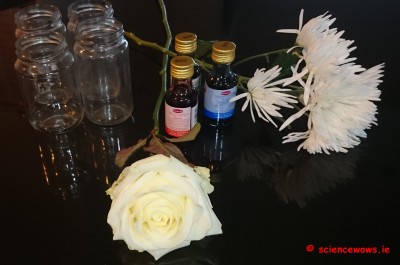
Place an entire bottle of food colouring into each jar and then top up with water until the jar is about half full
Now for the tricky bit, slice the stem of the flower into three pieces* (vertically)… so that the stem splits into three at the end;
Place each piece of the stem into a different jar and prop up if necessary
Leave overnight
*It may be easier to split the stem into four pieces and then either put the fourth part into a jar of water, a jar of a fourth colour, or simply add it into one of the other three jars
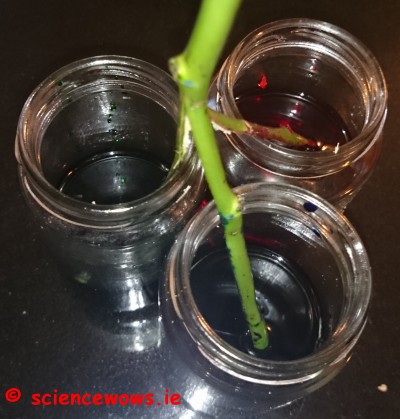
You should find your rose looks something like this…

Water is transported up the stem of the flower through little tubes called xylem. The coloured water will travel through the xylem all the way up the stem to various parts of the plant and right up to the flower. The water ultimately evaporates out of the plant through little pores called stromata. This process is called transpiration and is much like perspiration in humans.
The food colouring is drawn up the xylem along with the water, and changes the colour of the petals when it reaches the flower. Different parts of the flower receive their water supply from different xylem, hence different parts of the flower end up different colours.
Now I have a question for you…. if you remove the flower once the petals are coloured and place it back in plain water…. will the petals retain their colours or lose them? Let me know what you think, or even better, try it out and see!

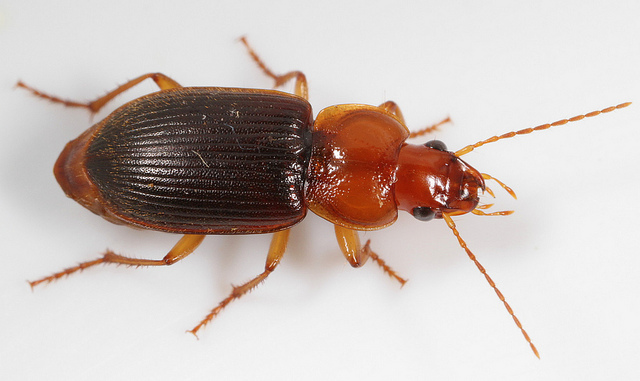
Did you guess this week’s Mystery Creature? It was the Bombardier Beetle… a little bug that packs a big punch when threatened!

When the bonbardier beetle is threatened it uses some serious chemical warfare against the predator – shooting a hot burning chemical spray out his rear end! Although more than 500 of these ground beetles exist they all have the same method of defense. It is all down to the storage of two chemicals (in most species – hydrogen peroxide and hydroquinone), within a reservoir in the abdomen of the beetle. When threatened the beetle releases both chemicals into another chamber – a thick walled firing chamber where catalytic enzymes are release kicking off the reaction. Temperatures rapidly rise to near boiling causing an explosion that propels the hot toxic spray out valves at the tip of the abdomen. The spray is accompanied by a short popping sound.
It seems these impressive defense mechanisms are even inspiring research into aircraft safety mechanisms in the event of engine failure!
Bombardier beetles belong to the family Carabediae and are found on all continents except Antartica.
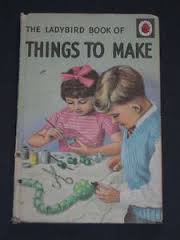
Its Mother’s Day on Sunday and I have three little delights that call me Mum… and oh how I love it! When I was younger I often changed my mind about what I wanted to be when I grew up but one thing I knew for sure was that I wanted to be a Mum! I had a great role model to inspire me!
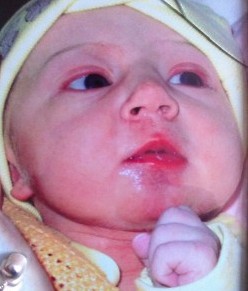
My biggest fear as I approached the birth of my first child was not of childbirth or pain or health, it was the fear that I would not instantly fall in love with my baby. I need not have worried; the power of that instantaneous bond was incredible.
Scientist and medics will explain it as a result of oxytocin released at birth, but it is so much more! Studies have shown that women’s brains can literally increase in size once they become a mum, but why has no one studied the undeniable, emotional swell of the heart?
For once this blog is not about the science or the facts … it is about the woman who inspired me to want to be a mother myself…. It is about my Mum.
I have some wonderful memories of my childhood, not minute by minute but scanning through the years. Whatever the memory, whatever the image, there is one person who seems to feature in all… my mother.
No matter what has happened in life I have always known that my Mum was there for me, often before I even realised I needed her. From grazed knees to lost friendships my Mum always knew how to make it right… and she still does.
Every childhood illness was made a little more bearable having my mum around. She always knew what would make it better; the cold facecloth, the warm soup, the dark room or just the loving hug. I can’t imagine it was easy to see how sick I was on each of my pregnancies but my mum was a constant support throughout; sometimes making an eight hour round trip just to come visit me in the hospital.
Of all the memories I have, these ones probably stand out the most….

The times we spent doing all those craft projects at the kitchen table, we went through the entire ladybird book… give me a calvita cheese box now and I know just what to do with it
The day I fell out with two kids down the road and my mum stopped what she was doing and came outside to play with me when she saw me on my own
The way she sat for FOUR hours holding my new daughter because we finally had her asleep and she wanted me to rest
After countless trips to so many shops… the moment we both knew we had found the perfect wedding dress
The hours spent walking my children in the middle of the night (and, although I don’t remember, I image there were many hours spent walking me too)
Fried soda bread for my breakfast when I come to visit
The day the budgie died and my Mum spent the afternoon helping me with his funeral
The wonderful home baked sweet tea EVERY Saturday, at the time none of us appreciated the silent sacrifice of an afternoon spent baking
The help, encouragement and advice when I became a mum myself
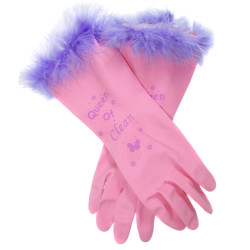
The way she always packs the “Marigolds” when coming to visit me and spends the entire time cleaning my house and cooking the dinners
The day she had to bring me to casualty for an x-ray and she dealt so calmly with my meltdown when someone suggested I might have to stay overnight
Her shepherds pie, her corned beef, her colcannon and the fact that I have accepted that mine will never taste quite as good
And most of all I remember the day my Mum dropped everything and managed to travel over 2000 miles to be by my side when I needed her
Sometimes there is no need for science to explain what we already know, and I know that I am lucky to be able to call her my Mum!
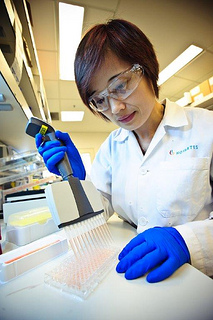
What do those scientists on da telly really do?
Scientists on da telly … no matter what the report is about… the scene is always the same… people in lab coats, wearing latex gloves, pipetting small amounts of liquid into tiny little tubes and, for the finale… someone working with their arms well immersed in a fume hood!
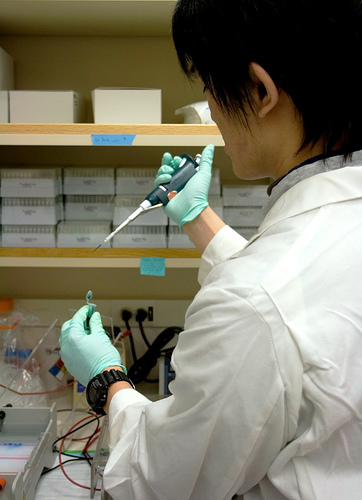
That, apparently is what all scientists do! (that and nothing but that!)
I roll my eyes and groan and start ranting at whoever is unfortunate enough to be sitting beside me on the couch… but, actually, yes, I did do all those things when I was in a lab… but there is more to it than that, honestly!
So here is a post to right a few wrong and let you in on the secrets behind the lab door; what’s all that funny looking stuff and what do those scientists on da telly really do?
THE LAB COAT
Well, yes, you will find one of these on pretty much every occupant of the lab. Scientists will tell you that they are to protect their clothing but really… they are to hide what lies beneath because, let’s be honest, how many scientists do you know with a good sense of fashion?
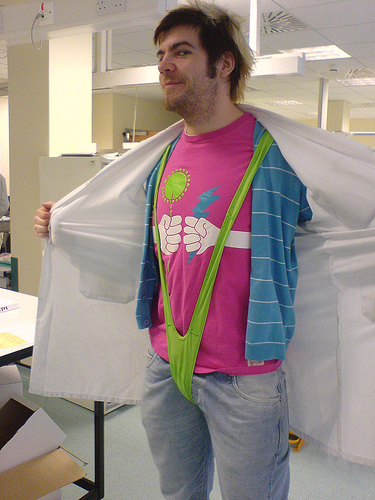
THE PIPETTE
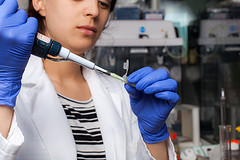
That funny looking thing that all those scientists are holding in their hand… in my day that was called a Gilson Pipette (Gilson for short because we were uber cool), named after one of the main manufacturers, but, I will concede, it has been a while, they may just go by pipette now, or perhaps some other brand name has taken over!
These were pretty cool as they came in different scales, colour coded on the top so you knew just the right one to use! With just a little turn of the dial you could set them to the exact measure you wanted to use….right down to 0.2 microlitres!

And if you really wanted to impress you could use the multi-tiped version… filling ten or more tubes in one go!
Uhuh, the excitement when that one came on the scene was something else, let me tell you!
THE FUNNY LOOKING TUBES
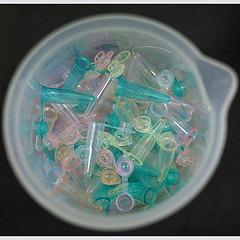
EPPENDORPHS! Don’t you just love the sound of that… Ep.En.Dorphs! I’m telling you, there is a whole new vocabulary to learn once you don that white coat! Again I think these are named after the manufacturers, a company in Germany.
Nowadays you can get them in all different colours – perfect to colour coordinated with your favourite lipstick your experiment.
They come in mini-mini versions too, called PCR tubes, extremely cute but requiring some petite, nimble fingers for those oh-so-tiny lids. After opening and closing hundreds of these things the cuteness factor can wear off a bit!
VORTEXES AND CENTRIFUGES
So once all those little tubes are filled, what happens next? Just like with baking, it is always a good idea to ensure everything is well mixed. First up… the vortex, just push down on the little rubber top and the entire contents of the tube, and every cell in your body, get a good shake up! One of those childishly amusing experiences that never gets dull.
James Bond should have included one of these clever little gismos in his super gadget kit, for the perfect Martini every time.

Shaken,
not
stirred!
After the shake up its time for a little spin down. The centrifuge is the machine for the job, again coming in all shapes and sizes, my own personal favourite… the little picofuge…. in fact I love them so much, I want one for my kitchen counter. I am not even sure what I would use it for but I guess it just appeals to the geek within!
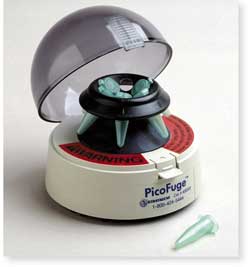
The cute little
picofuge
…every kitchen
should have one!
So there you have it… next time you are watching science on the news you can see how many of these you can spot (hopefully not the flashing guy in the lab coat but the rest should be in view for sure).
Of course this only covers the Irish version of the scientist… on the flip side of all this is the whole CSI scene… a must watch for all us geeky types although it elicits an equal measure of interest and satire. The super high tech,the instantaneous results, the lasers, the spraying, the torches and enough luminol to float the titanic! As for the crime scenes themselves… who knew you could investigate them in high heels and leather jackets… not a lab coat or a hair net in sight!
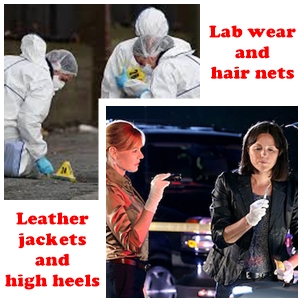
Additional image credit/sources: Vortex: www.benchmarkscientific.com; CSI scene: Michael Yaris, CBS

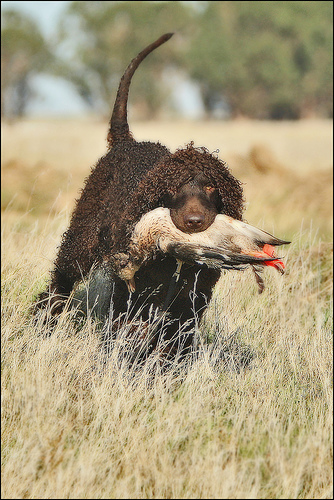
This week’s Mystery Creatures were all native Irish animals, but did you know what they were?
1. St. Patrick supposedly banished all the snakes from our Emerald Isle, but here is a reptile he left behind… the only native Irish reptile… the Common (vivparous) Lizard
Although not commonly spotted these lizards are found in a variety of habits all over Ireland; relying on the Sun to moderate their body temperature, these creatures need to hibernate to survive an Irish winter.
2. This is just one of a number of native Irish dog species…. the Irish Water Spaniel

This cute curly haired canine is a water retriever. Although it may look more like a large poodle it is the largest and one of the oldest breeds of spaniel.
3. A really charming native Irish species…. the Moiled Cow!
This cow is a rare native breed, distinctive for it’s lack of horns and specific colouring. The name comes from the Gaelic word Maol, meaning mound and refers to the dome shape of it’s head.
4. Hard to mention Irish animals without a nod to our equine friends…. this one is the Kerry Bog Pony.
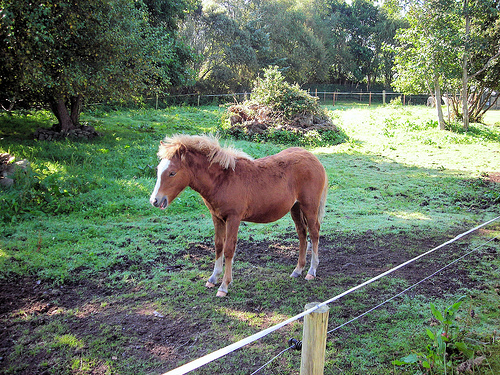
These native ponies were traditionally used for hauling peat from bogs. Their diminutive size (10 to 11.5 hands) and gentle temperament also made them ideal work ponies for small holdings.
5. And finally, the native Irish Black Bee, specially adapted for out damp and cold weather.
Our native honey bee has the longest body hair of all the European species, adapted to keep it warm against the Irish climate. It has a shorter breeding season to fit with the shorter days of warmth that (technically) define and Irish summer!
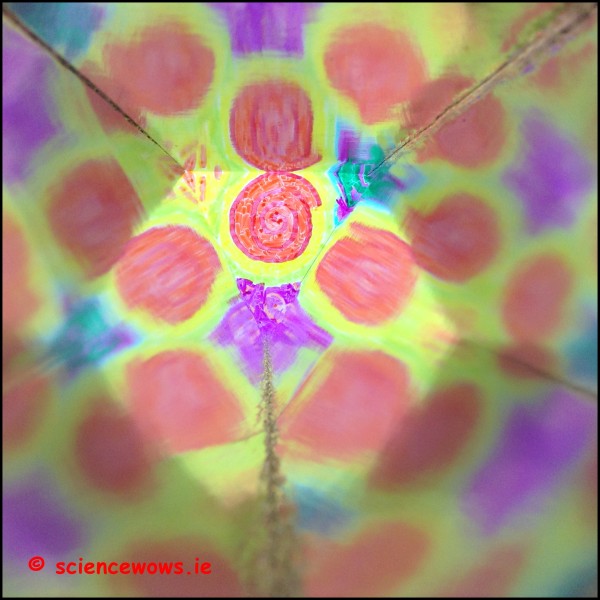
The weekend already…Yay! Hope you are doing something fun…. if you are looking for an activity to entertain your children why not try this?… My junior scientists had great fun making these simple kaleidoscopes and learning about light and reflection!

Here is what you will need:
What to do…
1. Cut a 6cm strip off the long end of our A4 mirrored card leaving the card 24 cm in length
2. Fold the card in half (mirror side in) so that the short ends meet
3. Open back out the card and next fold the short ends in so that they meet in the middle
4. You should now have a card with three folds and four sections, 6 cm wide
5. Next fold the card into a triangle (mirrored side in), with one of the strips overlapping
6. Tape this overlapping strip along the edge so the triangle is now secure – this will be the tube of your kaleidoscope
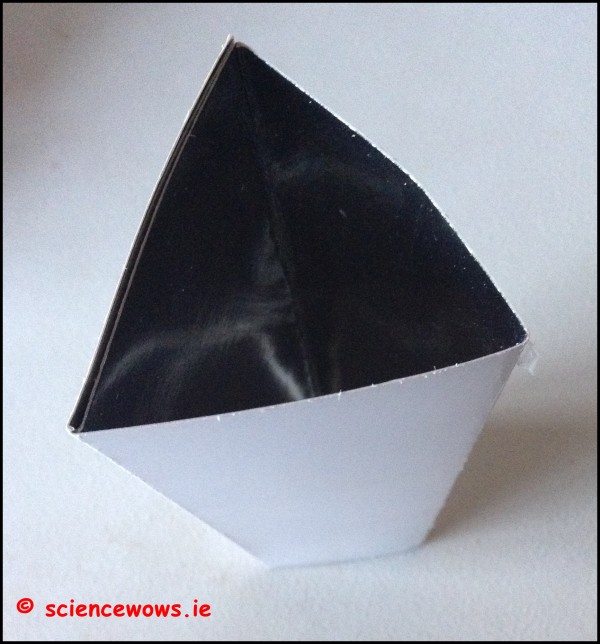
7. Now it is time to prepare the designs for your kaleidoscope… we used the coloured pens to draw designs on a square piece of clear plastic, at least 6 X 6 cm in size.
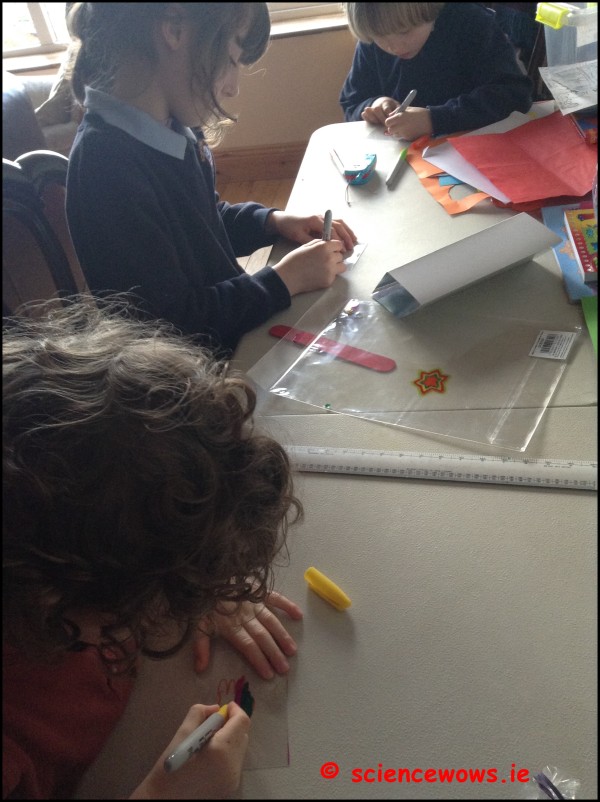
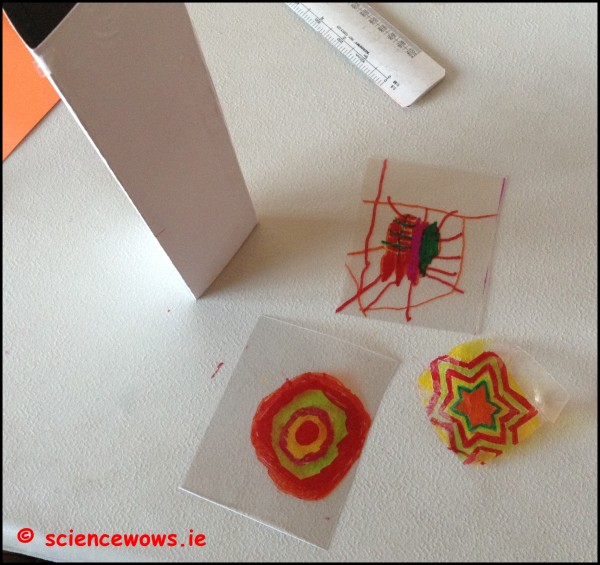
8. Once finished tape the coloured squares on to a piece of transparent paper (or you can just draw your design directly onto transparent paper if you wish)
9. Now it is time to use your Kaleidoscope… hold the transparent paper with the design up to a window or a light source, look at it through the kaleidoscope… rotate the paper and see how the patterns change
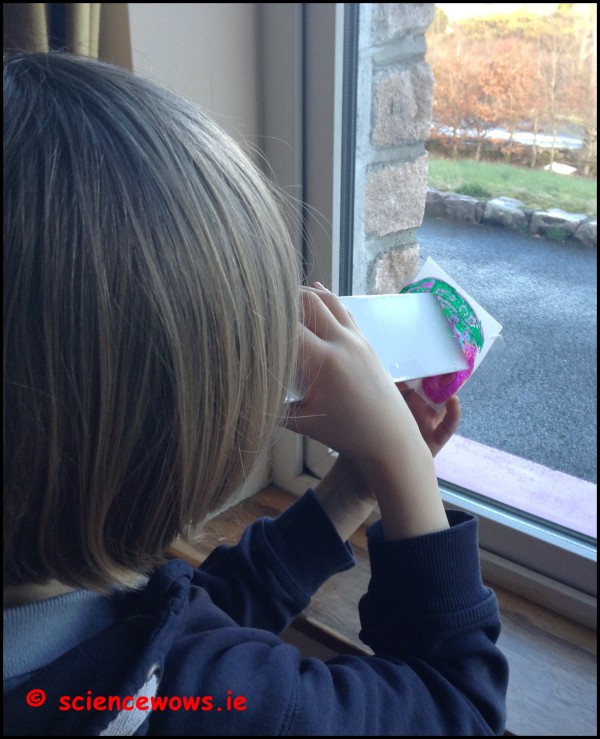
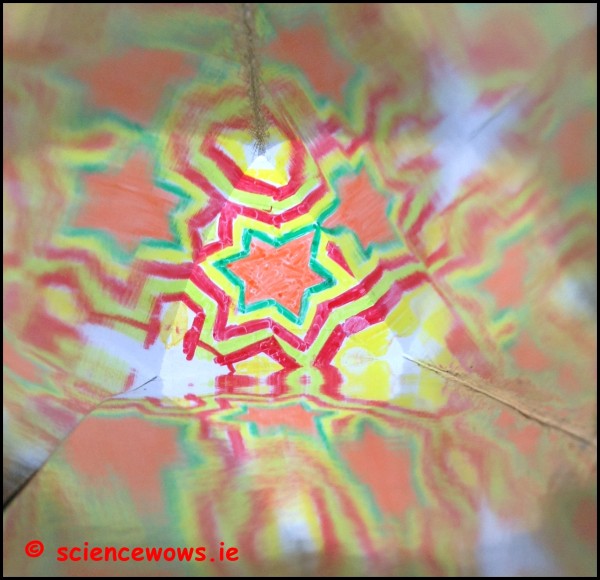
What is happening?
Light travels through the transparent paper into the kaleidoscope where is bounces off each of the three sides before reaching our eyes. As each side is mirrored it reflects the light that bounces off it and also the light bouncing off the other mirrored sides of the kaleidoscope. All this reflecting makes multiple images of different parts of the pattern and create a very interesting effect.
Do have a go it is great fun!
*Note: if you cannot get mirrored card you can use cardboard covered in aluminium foil. This will work better if you also add a layer of clear plastic on top of the foil… creating a better mirror!